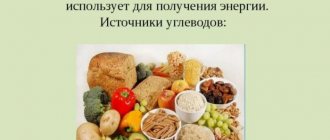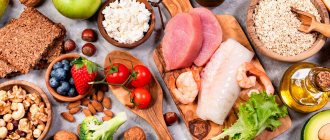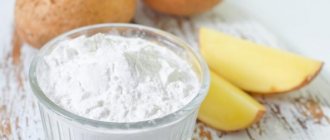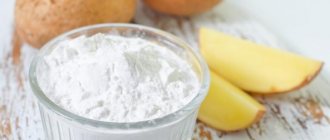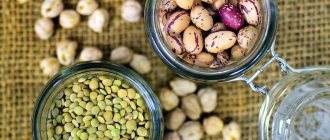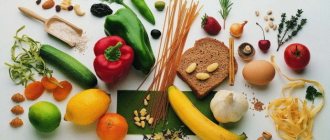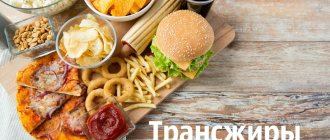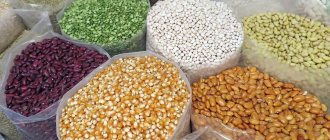Carbohydrates are natural organic substances. Their formula contains carbon and water. Thanks to these elements, the body draws the energy it needs to maintain normal functioning. Depending on their chemical structure, carbohydrates can be simple or complex.
What are carbohydrates
Carbohydrates are the main ingredient in most foods and serve as a source of energy for the human body. Depending on the number of structural units, carbohydrates are simple and complex.
The first category is also called fast carbohydrates. They are easily digestible and lead to a rapid increase in blood sugar. This means that the substances have a high glycemic index.
Such elements provoke metabolic disorders and cause weight gain. Systematic consumption of foods containing simple carbohydrates not only leads to obesity, but also causes many other diseases.
Complex carbohydrates, which include starch and fiber, contain many linked saccharides. They contain a large number of structural elements. Food with such carbohydrates is considered very healthy. During the digestion process, it gradually saturates the body with energy. This gives a long-lasting feeling of fullness.
Symptoms of high insulin
So, say, frequent consumption of high-carbohydrate foods (be it a full breakfast and lunch, yogurt instead of a snack, nuts and even one candy), the pancreas will react by synthesizing and releasing insulin.
Its constant circulation in the blood leads to a decrease in the sensitivity of cell receptors - they are capricious and no longer want to open their doors, letting in glucose. Insulin resistance develops
- the first step in the pathogenesis of type 2 diabetes mellitus.
We recommend
“Insulin resistance: prevention, nutrition and treatment” Read more
However, cells also do not like to go hungry: since glucose does not come to them from the outside, they begin to synthesize it themselves, inside their cytoplasm - gluconeogenesis is a process in which inside the cell itself from various non-carbohydrate compounds (for example, keto acids) comes to the rescue. Glucose is formed through a series of biochemical reactions.
You can suspect signs of insulin resistance based on the presence of the following symptoms:
- The appearance of papillomas
are benign tumors on the skin that occur due to excessive cell division. (The whole point is that insulin is an anabolic (synthesis) hormone. Athletes often sin by resorting to its injections: everything is for the growth of muscle mass. However, not only it, as we see, grows under its influence).
- Constant feeling of hunger
- glucose simply does not pass through the closed gates of the cells, and they, knocking on tambourines, begin to sound the alarm.
- Waist
more than 80 cm for women and more than 90 cm for men.
- Body mass index
>24 (excess weight is a sure companion of impaired carbohydrate metabolism).
- Blackening of the skin
on the elbows, armpits, groin and neck (acanthosis nigricans).
- Capillary angiomas
(red dots on the body).
- Hirsutism
(excessive hair growth); acne, alopecia (hair loss), anovulation and other signs of hyperandrogenism (increased levels of male sex hormones in the blood).
The reason for this is that the ovaries are stimulated directly by insulin or in combination with LH (luteinizing hormone) - and they begin to produce more androgens.
- Increased blood pressure and swelling
(insulin retains sodium, which pulls water with its tail - an increase in the volume of circulating blood occurs).
- Bacterial and fungal overgrowth syndrome
: Glucose is a favorite treat of many pathogenic organisms.
- Increased cholesterol
and stimulation of the growth of atherosclerotic plaques.
- Reduced bile fluidity
— its stagnation (cholestasis) develops.
- Geeking
(sugarification) of collagen and the appearance of wrinkles
- Damage to the vascular endothelium
. Thus, patients suffering from type 2 diabetes are much more at risk of developing stroke and heart attack - these diseases of the cardiovascular system account for more than 75% of all causes of mortality.
The negative impact of increased glucose levels on the endothelium (internal lining) of blood vessels comes down mainly to two of its effects:
- Increased sorbitol formation
(an alcohol synthesized during its biochemical transformations) and its accumulation in cells - here it causes a decrease in the level of myoinositol (an important transmitter (messenger) of intracellular signals) and also leads to osmotic damage.
- Formation of AGE products
(advanced glycation end-products or advanced glycation end products) - these three letters describe one of the most popular and scientifically proven theories of aging. Glucose, interacting with the amino acids of proteins, leads to their “sugarification”. The complexes formed in this way accumulate in cells and tissues, leading to their further damage.
In general, in the pathogenesis of the development of endothelial dysfunction, an important role is played by an imbalance between factors leading to vasodilation (vasodilatation), vasoconstriction (narrowing of the lumens of blood vessels), anti- and prothrombotic factors (in other words, anticoagulants and components of the blood coagulation system).
Nitric oxide
(NO) - one of the most powerful and important vasodilators - is formed during the biochemical conversion of the amino acid arginine to citrulline. Various pathological conditions, such as hyperglycemia (increased serum glucose levels), as previously noted, trigger increased work in the free radical production factory.
Reactive oxygen species (for example, superoxide anion) react with NO, forming a dangerous, powerful oxidizing agent - peroxynitrite, which destabilizes and causes various kinds of disturbances in the structure and operation of NO synthase (an enzyme that directly catalyzes the synthesis of nitric oxide, and also takes part in the formation neurotransmitters: serotonin, dopamine, etc.)
Study
: Antidiabetic Agents and Endothelial Dysfunction – Beyond Glucose Control
Functions of carbohydrates in the body
The key function of carbohydrates in the body lies in their transformation into energy. ATP, which is a universal source of energy, contains the monosaccharide ribose. ATP is formed due to glycolysis. This process involves the oxidation and breakdown of glucose into pyruvic acid.
Glycolysis occurs in several stages. Carbohydrates are oxidized to water and carbon dioxide. This process is accompanied by the release of energy.
The main functions of carbohydrates include the following:
- Structural.
Polysaccharides are the material for supporting elements. Cellulose, which is part of the structure of cell walls, gives plants rigidity. Fungal cells contain chitin. - Energy.
Carbohydrates represent the main source of energy. The breakdown of 1 g of carbohydrates releases 17.6 kJ of energy. - Protective.
The thorns and thorns of plants are made up of these elements. - Storage.
Carbohydrates are stored in the form of starch in the structure of plants and glycogen in animals. When there is a lack of energy, these substances are broken down into glucose. - Osmotic.
Substances help regulate osmotic pressure. - Receptor.
The elements are present in the composition of cellular receptors.
Individual carbohydrates form complex structures with protein elements and lipids. As a result, glycoproteins and glycolipids are formed. These elements are present in the composition of cell membranes.
Disaccharides and sucrose
Disaccharides are carbohydrates that contain residues of two monosaccharide molecules.
The most well-known disaccharides are sucrose or regular sugar, maltose and lactose , which is found in milk. Maltose and lactose are reducing carbohydrates. Maltose is obtained by enzymatic hydrolysis of starch and serves as an intermediate product in the production of beer and ethyl alcohol.
About 80% of people, especially in old age, suffer from “intolerance” to milk and dairy products, and this is explained by a low concentration or absence of the lactase enzyme, which is involved in the breakdown of the carbohydrate lactose into two monosaccharides. Infants produce enough lactase in their bodies, but the amount decreases with age.
In everyday life, sucrose is called sugar; it is a well-known food product. Sucrose is found in sugar beets (17-19%) and sugar cane (13-15%), from which beet or cane sugar is obtained.
Structure: Molecular formula of sucrose The molecule contains hydroxyl groups, as in the glucose molecule. Let’s verify this experimentally: let’s react a sucrose solution with freshly prepared copper(II) hydroxide. The resulting bright blue solution indicates the presence of several hydroxyl groups in the sucrose molecule.
Heating a sucrose solution with an ammonia solution of silver(1) oxide or with copper(II) hydroxide does not lead to the reaction of the silver mirror and the formation of a precipitate of copper(I) oxide. This suggests that the sucrose molecule lacks an aldehyde group. For this reason, sucrose, unlike glucose, is classified as a non-reducing carbohydrate.
Physical properties: Sucrose is a colorless crystalline substance with a melting point from 160 to 185 ° C, highly soluble in water, sweet in taste. Melted sucrose, when solidified, turns into a mixture of amorphous substances - caramel, and when poured onto a rotating cold drum it turns into cotton candy.
Chemical properties: Evidence that sucrose is a disaccharide is provided by the acid hydrolysis reaction. When a solution of sucrose is heated with dilute sulfuric acid, glucose and its isomer fructose are formed.
It has been established that in the sucrose molecule glucose is contained in the cyclic form, and fructose is contained in the cyclic form:
Simplified acid hydrolysis equation:
The products of acid hydrolysis of sucrose give a silver mirror reaction.
Under the influence of concentrated sulfuric acid, sucrose is able to split off water (dehydrate) with the formation of black products (Fig. 88), which have a complex cyclic structure. In addition, significant quantities are released during the reaction
Preparation and use: On an industrial scale, sucrose is obtained from the juice of sugar beets or sugar cane. These two plants provide about 90% of the world's sucrose production.
The production of sucrose from sugar beets consists of several stages. First, sugar beet tubers are washed from various contaminants, crushed into thin chips, and placed in special vessels into which hot water is passed. As a result of extraction with water, almost all sucrose passes into the solution, but at the same time various organic acids, proteins and coloring substances pass into the solution.
The resulting solution is treated with lime milk (solution). Sucrose forms water-soluble molecular complexes with calcium hydroxide. Acid impurities are precipitated in the form of calcium salts. At the next stage, carbon oxide (IV) is passed through the resulting solution, as a result of which the complexes with calcium hydroxide decompose to release pure sucrose, and calcium carbonate precipitates. The calcium carbonate precipitate is filtered and sucrose is separated from the remaining solution after evaporation in vacuum apparatus by centrifugation. The remainder is a brown solution (molasses), which contains up to 50% sucrose. Up to 70% of the sucrose contained in it is additionally extracted from molasses. To obtain white sugar, sucrose is dissolved in water and filtered through activated carbon or ion exchange resins.
Sucrose is an important food product and is also used to prepare some medicines and syrups for children. The mixture of glucose and fructose resulting from the acid hydrolysis of sucrose is called artificial honey and is used in the food industry.
Representatives of disaccharides are sucrose, or ordinary sugar, maltose and lactose. Sucrose is a non-reducing carbohydrate. Acid hydrolysis of sucrose produces glucose and fructose.
Polysaccharides and starch
Polysaccharides are carbohydrates that contain residues of a large number of monosaccharide molecules.
Polysaccharides include starch, glycogen and cellulose. Polysaccharides play a dual role in living nature: they are sources of chemical energy in the body (starch and glycogen) and an element of plant structure (cellulose). Glycogen is a reserve polysaccharide of animal organisms, synthesized and stored in the liver and muscles.
In the green leaves of plants, during the process of photosynthesis, glucose is formed, from which, as a result of a polycondensation reaction occurring under the action of enzymes, starch is obtained:
Starch is the most abundant biomolecule on earth after cellulose. It is found in many plants and is found in them in the form of starch grains. Cereals contain the most starch. Rice, for example, contains up to 86% starch. Potato tubers contain less starch (about 25%) (Table 33).
Structure: Starch grains differ in shape and size for each plant genus and are a mixture of two polysaccharides with different structures and properties: amylose (20% by weight) and amylopectin (80%).
Amylose is a polymer of a linear, unbranched structure, amylopectin is a polymer of a branched structure. Both amylose and amylopectin are composed of glucose residues in cyclic -form. Amylose is more soluble in water than amylopectin. Some varieties of peas contain 66-80% amylose, and one variety of corn contains almost pure amylopectin.
Starch macromolecules are built from glucose residues in cyclic form.
The formation of a fragment of a starch macromolecule with an unbranched structure in plants can be represented as follows:
The chemical bond between two glucose residues is formed by the participation of the hydroxyl group associated with the C1 carbon atom of one glucose molecule and the hydroxyl group of the C4 carbon atom of the other glucose molecule.
The starch formula is depicted as
The formation of starch in plants is an example of a polycondensation reaction, which is accompanied by the release of a byproduct - water molecules. Starch macromolecules have the form of a left-handed simple or double helix. Each unit of the double helix consists of six glucose residues connected to each other by oxygen bridges. A simplified diagram of a double helix is shown in Figure 89.
Six spiral links form a spatial structure of starch, inside of which there are voids partially filled with water molecules (“water channels”).
Physical properties: Starch is a white amorphous powder, insoluble in cold water. At room temperature, starch can contain about 20% water. If you make a suspension of starch in water and heat it, more water is absorbed and the granules can expand to 100 times their original volume. Starch swells, forming a viscous gel-like solution called a paste.
The average relative molecular weight of amylose and amylopectin is different for different starch samples.
Starch macromolecules consist of residues of glucose molecules in a cyclic form.
Starch consists of both linear macromolecules (amylose) and branched macromolecules (amylopectin).
Chemical properties, production and use of starch
Chemical properties:
1) Interaction with iodine solution. A characteristic reaction of starch is its interaction with iodine solution. When an alcohol solution of iodine acts on a paste solution, a blue color is formed (qualitative reaction). This color disappears when heated and reappears when cooled. The reaction is used for the qualitative determination of starch in food and other products containing starch.
As can be seen from Figure 90, iodine molecules enter the cavities of the starch macromolecule to form compounds of complex structure (inclusion compounds). Starch also forms similar compounds with some alcohols (for example, 1-butanol), fats and linear solvents.
Selective absorption of certain substances by starch is a special case of “molecular recognition”, when the molecules of certain organic compounds react (the process of “recognition”) only with specific inorganic or organic substances.
2) Hydrolysis. Hydrolysis of starch by boiling with a small amount of sulfuric acid ( acid hydrolysis ) occurs through several stages. The final product of hydrolysis is the monosaccharide glucose.
Intermediate products of acid hydrolysis of starch are dextrins, which have a molecular weight lower than that of starch, and the disaccharide maltose.
General process diagram:
Since there is a gradual breakdown of starch macromolecules into shorter chains, the number indicating the number of glucose residues in dextrins is significantly less than the number. The reaction equation for starch hydrolysis can be described in a simplified form:
Enzymatic hydrolysis produces predominantly the disaccharide maltose, which is widely used in the production of alcohol and beer.
If we first hydrolyze starch, and then neutralize the solution and react with copper(II) hydroxide when heated, we will be able to observe a red precipitate of copper(I) oxide. This proves that starch macromolecules are split and substances containing an aldehyde group are formed. The original starch does not form a red precipitate when heated with copper(II) hydroxide, since it does not contain an aldehyde group.
Preparation and use: In industry, starch is obtained from potatoes, corn or rice. The isolation method involves washing with water, which dissolves starch more easily than other components.
Starch is the most important source of carbohydrates for the body. The carbohydrates needed by the body come in sufficient quantities in the form of starch, found in bread, potatoes and various cereals. Under the action of enzymes in the digestive tract, starch and disaccharides undergo hydrolysis to glucose. Excess glucose is stored by the body in the muscles and liver in the form of glycogen polysaccharide.
Starch is used in the food and pharmaceutical industries, as adhesives in the textile, paper and printing industries, and for the production of glucose.
A qualitative reaction to starch is a reaction with iodine. Intermediate products of starch hydrolysis are dextrins and maltose. The final product of hydrolysis is glucose.
Cellulose
Cellulose, like starch and glycogen, is a natural polymer. Cellulose macromolecules are part of the cell walls of all plants. The name of the substance comes from the Latin word “cellula”, which means “cell”. Cotton, flax and hemp fibers consist mainly of cellulose (up to 99%), and in wood it is about 50% on a dry matter basis. An example of almost pure cellulose is cotton wool.
Structure: The formula of cellulose is the same as that of starch. But in fact, starch and cellulose are completely different substances. Unlike starch, whose macromolecules are built from glucose residues in the - form, cellulose macromolecules are built from glucose residues in the cyclic - form. The degree of polymerization of cellulose macromolecules ranges from several hundred to several thousand, and the relative molecular weight of cellulose reaches several million. Cellulose macromolecules are characterized by the linear structure of their chains.
Cellulose macromolecules are built from glucose residues in a cyclic form.
Scheme of the structure of the cellulose macromolecule:
Please note that in the structure of cellulose macromolecules, every second ring of a glucose residue is rotated 180° relative to the first, which ensures close packing of the chains of cellulose macromolecules. Since each glucose residue contains three hydroxyl groups, strong intermolecular hydrogen bonds are formed between the chains of cellulose macromolecules. This also increases the mechanical strength of cellulose compared to that of starch. Due to its mechanical strength, cellulose serves as a structural material for plants.
Like cellulose in plants, the main component of the exoskeleton of crustaceans (Fig. 91) and some insects is the aminopolysaccharide chitin. The difference between chitin and cellulose is that each glucose residue contains an acetamide group instead of one of the hydroxyl groups -
The human body lacks an enzyme capable of breaking down the chemical bonds of cellulose formed by glucose residues in the cyclic form. Therefore, cellulose cannot serve as a source of nutrition for humans. However, many microorganisms can break down cellulose. Such microorganisms live in the soil, the stomachs of ruminants, carpenter ants, etc. By eating dead trees, fallen leaves and paper debris, microorganisms thus help cleanse our planet of debris.
In addition to glucose residues, wood contains other organic substances, among which lignin is the most famous. The lignin macromolecule mainly consists of aromatic compound residues. Coniferous wood contains up to 30% lignin. Lignin is the non-hydrolysable part of wood.
The study of the structure of cellulose indicates that each glucose residue in the cellulose macromolecule contains three hydroxyl groups. Therefore, the formula of the structural unit of cellulose can be written as follows:
The presence of hydroxyl groups in the structural unit of the cellulose macromolecule makes it possible to obtain various derivatives, which will be described in the next paragraph.
Physical properties: Cellulose is a white amorphous substance. It does not dissolve in either water or common organic solvents, but can absorb about 10% water. When heated, cellulose chars and forms mixtures of various organic compounds.
Cellulose formula
Cellulose macromolecules are built from glucose residues in cyclic form and for this reason are tightly packed next to each other.
Classification of carbohydrates
Carbohydrates come in many varieties. This should definitely be taken into account when planning your diet. The classification of carbohydrates is divided into simple and complex or fast and slow.
Simple or fast carbohydrates include the following:
- Monosaccharides.
This category includes galactose, fructose, and glucose. These components are present in berries, fruits, and honey. Such substances are quickly absorbed and sharply increase blood sugar levels. As a result, glycogen is formed in the tissues, which is required for energy. When it is in excess, the substances form fatty deposits. To avoid negative consequences, the amount of monosaccharides should be no more than 25-35% of the total carbohydrates eaten during the day. - Disaccharides.
These mainly include sucrose, which includes regular sugar, and maltose. This component is present in malt, molasses, and honey. It is also found in milk sugar.
Complex or slow carbohydrates include polysaccharides. These substances include a large number of monosaccharides. They take a long time to digest and have a less sweet taste than simple carbohydrates. The main polysaccharides include the following:
- Starch and glycogen. These substances are present in cereals, legumes, potatoes, and corn.
- Cellulose. The element is found in cereals, seeds, vegetables, fruits, and bran.
- Cellulose. Ingredients include lettuce leaves, apples, pears, and carrots.
- Pectin. The substance is present in carrots, cabbage, citrus fruits, and strawberries.
- Inulin. The element is found in chicory, onions, barley, and garlic.
The main advantage of complex carbohydrates is that they slowly saturate the body. Thanks to this, the feeling of hunger does not occur prematurely.
Simple carbohydrates
These carbohydrates are characterized by a simple structure. Thanks to this, they are quickly absorbed in the body. With a lack of physical activity, substances increase blood sugar. After this, it quickly falls, which provokes a feeling of hunger. Unspent carbohydrates are transformed into fat deposits. At the same time, their deficiency causes fatigue and increased drowsiness.
Simple carbohydrates are divided into 2 categories - monosaccharides and disaccharides.
Monosaccharides include:
- glucose - it is found in most fruits and berries. The component is also present in honey and green plant fragments;
- fructose - this substance is present in honey, berries, and fruits. It is also found in the seeds of certain plants;
- galactose is the only monosaccharide that is of animal origin. It is part of lactose, or milk sugar.
Disaccharides are considered the most important for human nutrition. The molecule contains glucose. The second sugar can be fructose, galactose or glucose.
There are these types of disaccharides:
- sucrose - it includes glucose and fructose. This category includes sugar from cane or beets;
- maltose - the substance contains 2 glucose residues. It is present in licorice sugar;
- Lactose is an element that includes glucose and galactose and is found in the milk of mammals.
List of healthy foods that contain fast carbohydrates:
- potato;
- pumpkin;
- corn;
- a pineapple;
- banana;
- melon;
- watermelon;
- White rice;
- nuts;
- dried fruits.
However, there are harmful foods that should be completely avoided.
These include:
- baked goods made from premium flour;
- candies;
- sweet carbonated drinks;
- snacks;
- alcohol;
- cakes, waffles, cookies.
Fructose
Isomerism of monosaccharides: There are other monosaccharides in nature that have the same molecular composition as glucose, one of which is fructose. The molecular formula of fructose is the same as that of glucose, which is why fructose is an isomer of glucose. For comparison, the structural formulas of glucose and fructose are given:
From the structural formulas of the two monosaccharides one can see the difference in their structure. The fructose molecule contains a ketone group, and the glucose molecule contains an aldehyde group.
Unlike the glucose molecule, which has five carbon atoms in its cycle, the fructose molecule has four carbon atoms in its cycle. The structure of the cyclic forms of fructose (not for memorization purposes) is depicted as follows (note that for the sake of simplicity, the symbols for carbon atoms and associated hydrogen atoms have been omitted):
Physical properties of monosaccharides
Glucose and fructose are colorless crystalline substances, highly soluble in water, and sweet in taste. In a free state, glucose and fructose are found in berries, fruits and sweet vegetables. Grapes contain especially a lot of glucose and fructose in equal concentrations. Sweet apples, pears and watermelons contain approximately twice as much fructose as glucose. Honey (Fig. 87) consists of a mixture of glucose and fructose.
Human blood also contains glucose, its mass fraction is approximately 0.1%. The level of glucose in the blood during life is regulated by the naturally occurring hormone insulin. In diabetes (mellitus), glucose is found in increased concentrations in the blood and urine, which is why people suffering from diabetes require daily insulin injections.
Among all monosaccharides, fructose has the sweetest taste (Table 32).
The glucose molecule contains an aldehyde group and five hydroxyl groups.
In solid form, glucose exists in two cyclic forms. Glucose and fructose are isomers.
Chemical properties, production and use of glucose
Chemical properties. Glucose is a representative of bifunctional organic compounds containing two different functional groups in their molecules. Glucose is both an aldehyde and a polyhydric alcohol. The chemical properties of glucose confirm the presence of both an aldehyde group and hydroxyl groups in its molecule.
1) Oxidation. When a glucose solution reacts even with such a weak oxidizing agent as bromine water, gluconic acid is formed:
This causes the bromine solution to become discolored, so this reaction can be used to determine the presence of an aldehyde group in glucose molecules.
A qualitative reaction to the presence of an aldehyde group is the interaction of an aqueous solution of glucose with an ammonia solution of silver(1) oxide when heated. If this reaction is carried out in a test tube with low heating, then as a result a mirror coating of silver appears on the walls of the test tube - the silver mirror reaction. For this reason, glucose is classified as a reducing sugar.
If a glucose solution is added to freshly prepared copper(II) hydroxide, an intense blue color appears, characteristic of compounds containing two or more hydroxyl groups in the molecule (qualitative reaction to polyhydric alcohols). When the substance is heated, another qualitative reaction of glucose oxidation is observed with the formation of a red precipitate of copper(I) oxide. This reaction is used for the quantitative determination of glucose.
Glucose, when heated with an ammonia solution of silver(1) oxide or an alkaline solution of copper(II) hydroxide, is oxidized into a complex mixture of products.
2) Recovery. Reduction of glucose occurs with the formation of hexahydric alcohol - sorbitol: 3) Fermentation. Glucose also has some specific properties, such as fermentation - destructive decomposition under the action of enzymes. Several types of fermentation are possible:
Alcohol fermentation reactions underlie the production of alcohol, wine, beer, and baked goods.
Lactic acid fermentation, caused by bacteria of the genus Lactobacillus, occurs in the processes of producing a number of food products (yogurt, kefir, etc.), in the textile and leather industries, as well as during feed ensiling.
Preparation and use: In nature, glucose is formed during photosynthesis - the interaction of carbon monoxide (IV) and water in the green parts of plants under the influence of sunlight and in the presence of chlorophyll:
For the first time, the synthesis of sugary substances from formic aldehyde was carried out in 1861 by the Russian scientist A. M. Butlerov:
In industry, glucose is obtained by hydrolysis of starch in the presence of sulfuric acid:
Glucose is a valuable nutritional product. The most important function of glucose in the body is to provide energy. When glucose is oxidized, the body releases energy necessary for human life.
Glucose is used in medicine as a nutrient and a component of blood replacement anti-shock fluids. In addition, the calcium salt of gluconic acid (calcium gluconate) is widely used in medicine.
Glucose is used to produce vitamin C (ascorbic acid), sorbitol and biopolymers, as well as in the confectionery industry.
Glucose is characterized by oxidation, reduction and enzymatic fermentation reactions.
In industry, glucose is obtained by hydrolysis of starch in the presence of sulfuric acid.
Glucose is used to produce vitamin C (ascorbic acid), sorbitol and biopolymers in the confectionery industry.
Complex carbohydrates
These products are based on polysaccharides - starch and cellulose. Such substances ensure normal digestion and satiate a person for a long time.
The list of foods that contain a lot of complex carbohydrates includes the following:
- all vegetables - with the exception of potatoes and pumpkin;
- citrus fruit;
- berries;
- apples and pears;
- apricots;
- millet, pearl barley, buckwheat, oatmeal;
- legumes
Beverages in this category include unsweetened tea and coffee. There are also some complex carbohydrates in meat and fish. They are found in eggs, kefir, and cottage cheese.
Test on the topic
- /10
Question 1 of 10What is the ratio of hydrogen and oxygen atoms in carbohydrates?
Start test
Hall of Fame
To get here, take the test.
- Kolya Samoshkin
10/10
- Daria Markina
10/10
- Sergey Krapivko
10/10
Fast carbohydrates
Fast carbohydrates are considered simple and include only 1-2 molecules:
- 1 molecule contains monosaccharides;
- 2 molecules are present in disaccharides.
All fast carbohydrates have a high glycemic index. It exceeds 70. Such substances have a sweet taste and are perfectly soluble in water.
The breakdown of simple carbohydrates begins in the oral cavity. They penetrate the blood very quickly. Within a few minutes after consumption, glucose levels increase significantly. At the same time, it stays at a high level for no more than 30-40 minutes. Then just as suddenly it decreases.
Fast carbohydrates are required to restore energy after difficult physical activity or stress. They help bring a person out of a hypoglycemic coma.
However, you should not constantly use such substances. This provokes depletion of the pancreas and causes it to function under stress. It is an excess of simple carbohydrates that provokes the development of type 2 diabetes. When you eat simple carbohydrates at night, they transform into fats.
Foods with a high glycemic index include the following:
- sugar, honey;
- baked potatoes, mashed potatoes;
- boiled carrots and pumpkin;
- bananas, melons, watermelons, pineapples;
- confectionery;
- dates;
- bakery products.
Red list of products
It is advisable to exclude the products listed below or at least reduce their consumption not only for patients on treatment protocols, but also for healthy, conscious people: after all, insulin resistance is a lifestyle disease.
- Sugar (including fruits, honey, dried fruits, sweet juices, store-bought sweets).
- Porridge (oatmeal, pearl barley, corn, semolina, rice, except wild).
- Bakery products.
- Flour, starch, semi-finished products, pasta.
- Store-bought sauces.
- Chips, beer, crackers.
- Soda and energy drinks.
- Corn syrup is truly a wolf in sheep's clothing.
Where is the enemy hiding or learning to read labels - what is another name for sugar?
- Coconut sugar
- Beet sugar
- Cane sugar
- Palm sugar
- Barley malt
- Maltodextrin
- Maltose
- Dextrose
- Corn sugar
- Fructose
- Levulose
- Corn syrup
- Malt syrup
- Molasses
- Agave syrup
- Maple syrup
- Isoglucose
- Brown sugar
Slow carbohydrates
Slow carbohydrates are also called complex carbohydrates. They include 3 or more molecules. Therefore, these substances are characterized by slow breakdown. They are usually absorbed in the intestines. Complex carbohydrates include dextrin, starch, cellulose, glycogen, and glucomannan.
Eating slow carbohydrates promotes a smooth flow of glucose into the human body. In this case, no peaks or jumps are observed. It is complex carbohydrates that satiate a person for a long time, maintain a stable mood and make him more balanced.
The glycemic index of such products ranges from 0-40.
These include the following:
- durum wheat pasta;
- brown rice, barley, pearl barley, buckwheat, millet;
- legumes;
- fruits - peaches, oranges, cherries, apples, pears;
- vegetables and herbs - onions, spinach, zucchini, peppers, tomatoes, cabbage;
- mushrooms.
Structure of carbohydrates
The structure of carbohydrates includes several carbonyl and hydroxyl groups.
Depending on their structure, substances are divided into 3 categories:
- monosaccharides;
- oligosaccharides;
- polysaccharides.
Monosaccharides are the simplest sugars that contain only 1 molecule. They have several groups that differ in the number of carbon atoms in the molecule. Monosaccharides containing 3 carbon atoms are called trioses. If the composition contains 5 atoms, they are called pentoses, if 6 - hexoses.
Pentoses, which are present in nucleic acids, are considered the most valuable for living organisms. Hexoses, which make up polysaccharides, are also of great importance.
Oligosaccharides contain 2-10 structural elements.
Depending on the quantity there are:
- diosis;
- trioses;
- tetraose;
- pentasaccharides;
- hexasaccharides.
The most significant are disaccharides, which include sucrose, maltose and lactose, as well as trisaccharides. This category includes melicitose, raffinose, and maltotriose.
Olisaccharides can contain homogeneous and heterogeneous structures.
Depending on this, the following types are distinguished:
- homooligosaccharides - all molecules have the same structure;
- heterooligosaccharides - molecules differ in structure.
Polysaccharides are considered the most complex carbohydrates. They include many monosaccharides - from 10 to several thousand.
Such substances include the following:
- starch;
- chitin;
- glycogen;
- cellulose.
Polysaccharides have a more rigid structure than oligosaccharides and monosaccharides. They do not dissolve in water and do not have a sweet taste.
According to the number of structural links
- Monosaccharides - contain one structural unit.
- Oligosaccharides - contain from 2 to 10 structural units (disaccharides, trisaccharides, etc.).
- Polysaccharides - contain n structural units.
Some essential carbohydrates:
| Monosaccharides | Disaccharides | Polysaccharides |
| Glucose C6H12O6 Fructose C6H12O6 Ribose C5H10O5 Deoxyribose C5H10O4 | Sucrose С12Н22О11 Lactose С12Н22О11 Maltose С12Н22О11 Cellobiose С12Н22О11 | Cellulose (C6H10O5)n Starch (C6H10O5)n |
Composition of carbohydrates
The composition of carbohydrates is divided into the following categories:
- Monosaccharides
- contain 1 monomer unit and are not hydrolyzed to form simpler carbohydrates. Monomers are varied. This is due to the difference in structure. Typically, monosaccharides in living organisms are ring carbon chains that contain 5 or 6 carbon atoms. The most important monosaccharides are ribose and deoxyribose, which are present in nucleic acids. They also include glucose as a source of energy and fructose. - Disaccharides
- include 2 monomer units. We can say that they consist of 2 monosaccharides. Substances combine through hydroxyl groups. In this case, water is separated. The most famous disaccharide is sucrose. Its molecule includes glucose and fructose residues. 2 glucose residues are part of maltose. - Polysaccharides
- include more than 10 monomer units. This category includes starch, chitin, cellulose, etc. Starch and glycogen accumulate in organisms as reserve nutrients. Starch has a less branched structure than glycogen. Cellulose forms the walls of plant cells. Due to this, it realizes structural and protective functions. Chitin solves similar problems in fungi and animals.
Starch
Starch is a polysaccharide built from cyclic α-glucose residues.
It includes:
- amylose (inner part of starch grain) – 10-20%
- amylopectin (starch grain shell) – 80-90%
The amylose chain includes 200 - 1000 α-glucose residues (average molecular weight 160,000) and has an unbranched structure.
Amylopectin has a branched structure and a much larger molecular weight than amylose.
Properties of starch
- Hydrolysis of starch : when boiled in an acidic environment, starch is hydrolyzed successively:
- Starch does not give a “silver mirror” reaction and does not reduce copper (II) hydroxide.
- Qualitative reaction to starch: blue color with iodine solution.
Properties of carbohydrates
The main properties of carbohydrates include the following:
- Molecular mass.
Among carbohydrates you can find very simple elements, the molecular weight of which is approximately 200, and giant polymers. Their molecular weight reaches several million. - Solubility in water.
Monosaccharides easily dissolve in water and form syrups. - Oxidation.
This process leads to the production of the corresponding acids. For example, the oxidation of glucose with an ammonia solution of silver oxide hydrate leads to the formation of gluconic acid. - Recovery.
When reducing sugars, it is possible to obtain polyhydric alcohols. Hydrogen in nickel, lithium aluminum hydride, etc. act as a reducing agent. - Alkylation.
This term refers to the formation of ethers. - Acylation.
This concept includes the formation of esters.
Digestion of carbohydrates
Among carbohydrates, the human body primarily digests polysaccharides - starch from plant products and glycogen, which is present in animal foods.
Polysaccharides are broken down by digestive enzymes into building blocks - free D-glucose. This process occurs under the influence of salivary amylase and is accompanied by the formation of a mixture of maltose, glucose and oligosaccharides.
Digestion of carbohydrates continues and ends in the small intestine. This process is influenced by pancreatic amylase, which enters the duodenum.
The hydrolysis of disaccharides is triggered by enzymes that are present in the outer layer of epithelial cells lining the small intestine. In the epithelial cells of the small intestine, partial transformation of D-fructose, D-galactose, D-mannose into D-glucose occurs. A mixture of simple hexoses is absorbed by epithelial cells and enters the liver through the bloodstream.
Glucose metabolism, its regulation
Ketogenic diet
- low-carbohydrate diet (about 50 grams) high in fat.
So, to the list of “ prohibited”
» products include:
- Fruits
- Cereals
- Bakery and confectionery products
- Honey
- Starchy vegetables
- Juices, lemonades, alcoholic drinks
- Trans fats
- Oils high in omega-6 polyunsaturated fatty acids: sunflower oil, as well as palm, cottonseed, and rapeseed.
- Low-fat dairy products
- Ready sauces
- Energetic drinks
Despite the rather impressive red list of taboos, the low-carb diet is nevertheless quite varied and includes fresh berries, meat, dairy products, fish and seafood, nuts and seeds, vegetables, herbs, and vegetable oils.
We recommend
“Common types of diets in nutritionology and their descriptions” Read more
Most of the usual, traditional dishes can also be easily prepared, taking into account the rules and carbohydrate limits of the keto diet - you just need to show a little imagination and slightly change the established focus of vision.
Low-carbohydrate diets, due to their high fat consumption, make it easy to stick to a 2-3 meals a day diet, avoiding annoying thoughts about snacking. In addition, they can easily tolerate intermittent fasting, which is so relevant in the context of treating carbohydrate metabolism disorders.
Beneficial effects of the ketogenic diet:
- Weight loss
and combating metabolic syndrome.
Excessive consumption of carbohydrates, especially sugar, causes the so-called metabolic syndrome, which includes: obesity, type 2 diabetes, cardiovascular disease, lipid problems, inflammation and hypertension. A systematic review of major clinical trials of low-carbohydrate diets found significant weight loss and improvements in major cardiovascular disease risk factors.
- Reducing the frequency of epileptic seizures
- by blocking the receptors of such an excitatory neurotransmitter as glutamate in one of the key structures of the brain - in the hippocampus.
- Treatment of neurodegenerative diseases and disorders
(including depression and Alzheimer's disease).
- Anticonvulsant action
- turns out to be due to the activation of inhibition processes by gamma-aminobutyric acid (GABA), activation of the opioid system of the brain, reducing the effects of excitatory amino acids, the synthesis of nitric oxide (NO) - a powerful vasodilator.
- Changes the composition of bacteria
, inhabiting the intestines.
Thus, a study in which 14 epileptic and 30 healthy children participated showed: in patients with epilepsy after treatment with a ketogenic diet, the number of pathogenic strains of proteobacteria (such as salmonella, vibrio, E. coli) significantly decreased.
Carbohydrates
- vital nutrients that perform a number of important functions in the human body. This is the source of energy, and therefore the existence of our cells.
Their excess has no less adverse effect on the functioning of all systems than their complete absence. From hypoglycemia to diabetes mellitus - going to extremes, it is impossible to achieve the golden mean, those most optimal conditions for a high-quality and healthy life.
Metabolism of carbohydrates in the body
The metabolism of carbohydrates in the human body is based on the processes described below:
- The brain does not have a glycogen reserve, so it constantly requires glucose. Carbohydrates are the only source that helps cover the energy costs of the brain. It is the brain tissue that absorbs 70% of the glucose that is released by the liver.
- During active work, muscle tissue receives large amounts of glucose from the blood. In them, this substance is transformed into glycogen. When glycogen breaks down, enough energy is available for muscle contraction.
- The level of glucose in the blood is regulated by hormones - glucagon, somatotropin, cortisol, insulin, adrenaline. Insulin helps reduce blood glucose when it rises, facilitates its entry into cells and ensures the deposition of the substance in tissues in the form of glycogen. When blood glucose parameters decrease, somatotropin, cortisol, adrenaline and glucagon inhibit the uptake of glucose by cells. Due to this, glycogen is transformed into glucose.
Carbohydrate-rich foods
The following are foods rich in carbohydrates in large quantities:
- Bread.
Wheat flour is considered an important source of such substances. It is worth considering that bread should be consumed in moderation. In addition to starch, a whole grain product contains proteins, minerals, vitamins, and fats. These substances are very useful. - Rice.
Rice contains a lot of carbohydrates and B vitamins. However, nutritionists advise giving preference to unpolished varieties. - Legumes.
Such products have high nutritional value. They are characterized by a hard cellulose membrane, so it is important to pay attention to the correct cooking method. - Potato.
This product contains slightly less carbohydrates - about 20%. The remaining part is taken up by water. In addition, the composition contains vitamins and minerals. - Green vegetables.
In addition to complex carbohydrates, such foods include many vitamins. It is especially useful to eat fresh vegetables. Preference should be given to lettuce, peppers, green beans, young peas, and cabbage. You should definitely eat spinach because it contains a lot of iron.
Norm of carbohydrates per day for the body
The need for carbohydrates depends on the intensity of intellectual and physical activity. On average, the norm of carbohydrates per day for the body is 300-500 g. About 20% can be carbohydrates that are easily digested.
Older people should consume a maximum of 300 g of carbohydrates per day. In this case, the number of simple elements should not be more than 15-20%.
If you are overweight or have other pathologies, the amount of carbohydrates should be limited. However, this should be done gradually. Thanks to this, the body will be able to adapt to changes in metabolic processes. The restriction should start with 200-250 g per day. After a week, it is permissible to reduce the amount of carbohydrates to 100 g.
If you sharply reduce the amount of carbohydrates over a long period of time, there is a risk of developing various disorders.
These include the following:
- decreased blood sugar levels;
- general weakness;
- severe decrease in intellectual and physical activity;
- weight loss;
- metabolic disorder;
- increased drowsiness;
- dizziness;
- headache;
- hand tremors;
- feeling of hunger;
- colon cancer;
- constipation
Unpleasant symptoms can be eliminated after eating sugar or other sweet foods. However, they should be eaten in moderation. This will help avoid weight gain.
Excess carbohydrates, especially simple ones, are also harmful to the body. It leads to an increase in blood sugar levels. As a result, some substances are not used and lead to the accumulation of fatty deposits. This provokes diabetes mellitus, caries, and atherosclerosis. There is also a risk of flatulence, obesity, heart and vascular disease.
Carbohydrate diet
To lose weight, you need to eliminate simple carbohydrates
Unlike other diets that are built on severely restricting the amount of carbohydrates, this diet allows their consumption. Indeed, due to a lack of carbohydrates, performance decreases and general condition worsens.
Of course, the carbohydrate diet, like others, has its own rules:
- eat about 5 times a day;
- each serving is approximately 100 g of food and 150 ml of liquid;
- limit the consumption of simple carbohydrates, use mainly complex carbohydrates;
- limit the consumption of sweets, fried foods, sugary drinks, salt;
- The last meal is no later than 7 pm.

